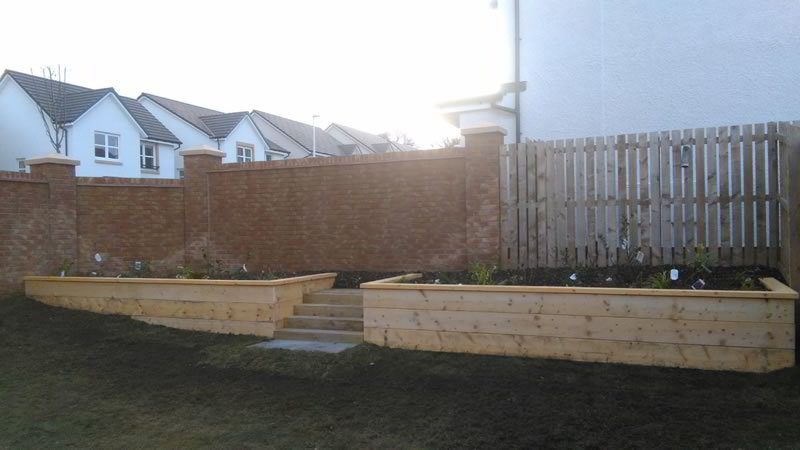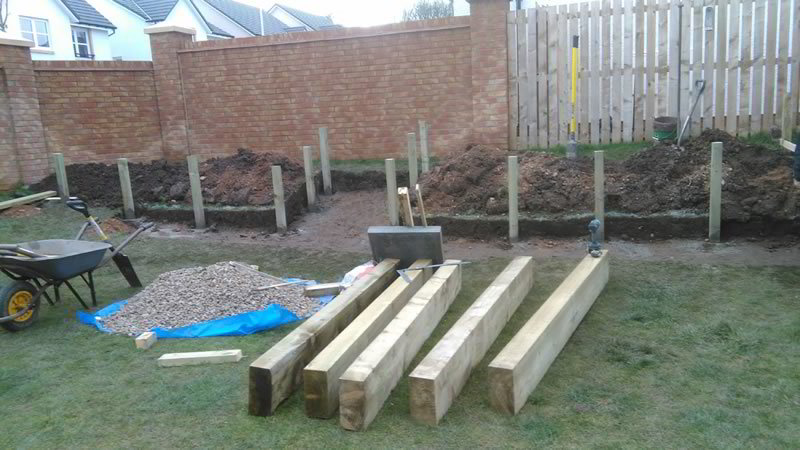Making a Terraced Garden

Gardens all have their challenges, as well as charm and horticultural appeal. One of the more challenging issues relates to uneven ground and steep slopes whereby maintaining a lawn or border becomes dangerous as well as difficult.
Many in society find gardening difficult, although everyone struggles to garden on steep slopes.
Raised beds/terraces enable gardening at a convenient height and with seating built in to the sides, more comfortable as well.
If using railway sleepers, the timber is wide enough for most people to sit on!
What are the options available to those who are having to deal with awkward steep slopes?
A new house and garden may come in to the category of a difficult sloping site, or existing gardens may have a long-standing problem slope. Retaining stone walls, or retention using substantial and treated wood can alleviate such areas and provide planting opportunity on a level terrace. The existing slope may have rock and stones near the surface, making planting impossible and by creating a raised bed and infilling with good soil; planting and making the area in to an attractive landscape feature may be feasible. Where the land slopes away from the house, the drainage should be adequate, however it is advantageous to incorporate stone and rubble to keep the soil suitably drained as too great a depth of topsoil can result in stagnant and compact soils.
What should you consider when planning your raised/terrace bed?
The location will be predetermined, but the depth and whether it needs to be terraced on different levels should be thought through. If the difference in height between the bottom and the top of the slope exceeds one metre; you should consider creating split levels and make the feature suitably wide; for example, a rise of 75cm, then 150cm of bed followed by another rise of 75cm and a further depth of bed at 150cm, but will vary according to the change in overall level and depth of bed being created.terraced garden layout.

Access to and from the house may necessitate the incorporation of steps or a gentle sloping path.
If using natural stone or timber; great care must be taken to ensure that the raised bed is soundly constructed and secure; timber sleepers and posts should be pressure treated. A cut and fill method may be adopted to ensure adequate soil is available for filling the bed and ensure successful planting. Remember that rubble can be placed in the bottom of the raised beds for suitable drainage, while organic matter should be incorporated to make a good planting medium.
Depending on the plants grown, you may vary the soil for planting. For instance, rock plants require a well-drained gritty soil and other plants require a rich organic soil with lots of compost.



